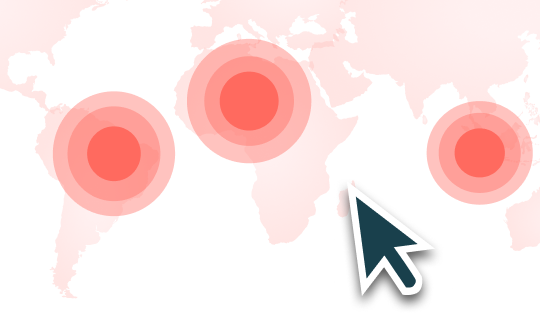Soy is an important crop in the east of Bolivia, principally in the department of Santa Cruz, the heartland of commercial agriculture in the country. Soy makes up almost half of the cultivated area in Santa Cruz and roughly 15% of the country’s total exports per year. But soy production dropped sharply this year. By the end of June, this year’s main harvest was down 24% compared to the average over the last three years. The second, shorter soy harvest, which lasts from May to September, is predicted to fall by almost 75% on last year’s crop.
Bolivian soy exports in the first half of 2024 also dropped in volume by more than 30% on the same period in 2023. And given that the country’s soy export prices are now below US$400 per tonne, the value of exports is likely to fall by an estimated 40% compared to 2023.
On the heels of this downturn, Alicorp, the parent company of leading exporter Industrias de Aceite S.A. (IASA), is selling its crushing business in Bolivia. Through its subsidiaries, Alicorp owns two of the largest crushing plants in the country, representing almost 30% of total soy crushing capacity.
Alicorp said it decided to focus on strengthening its consumer goods business, as its reason for exiting the soy sector. The company's recent risk report highlights a decrease in profit margins in the crushing industry due to a drop in the price of soy on the global market. A series of ‘bumper’ crops in Brazil and the US has meant that prices for soy are at their lowest since 2020, and well below their peak in 2022 when prices climbed in response to the war in Ukraine and a dip in global soy production. Bolivia’s recent economic and political crises have also prompted other multinational companies operating in the country to limit their exposure or pack up shop completely.
Extreme weather hits soy production
Bolivia’s National Association of Oilseed Producers (ANAPO), blamed the poor soy harvest on the recent prolonged drought in the region. Producers sowing soy in November last year faced low rainfall and unusually high temperatures, followed later in the season by a series of heavy downpours which damaged crops. The National Meteorology and Hydrology Service (Senamhi) says that the naturally occurring El Niño climate pattern is likely to be reducing rainfall in parts of the country which are already drought-prone, whilst increasing rainfall in humid areas.
But human-caused factors are also taking their toll on the region; namely climate change, which is likely to be exacerbating the effects of El Niño, and deforestation. A report by NGO Fundación Tierra, showed that annual rainfall has fallen by some 27% on average in Santa Cruz from 1985 to 2022. Santa Cruz is home to the vast majority of soybean production and associated deforestation in Bolivia. The report also found that, at a local level, changes in temperature and rainfall over this period were more pronounced in deforested areas than those which remained forested.
The relationship between deforestation and global climate change is well-established. But the links between regional climate change and deforestation are increasingly being identified and may have widespread implications for the agricultural sector across South America. Last year researchers explored the connection between surface-temperature changes driven by deforestation at regional and local scales across the Amazon basin. They found that deforestation can cause a warming effect for communities and forests as far away as 100km from the deforestation frontier, and that regional deforestation can amplify local deforestation-induced warming by a factor of four. In general, higher rates of warming were also found at locations experiencing high levels of both local and regional deforestation.
In a separate study, researchers have estimated that the soy sector in the Brazilian Amazon and Cerrado is set to lose up to US$250 per hectare per year by 2050 as a result of both global climate change and an increase in heat extremes as a consequence of deforestation.
Action needed to stop deforestation
The relationship between climate change and deforestation raises serious questions for the Bolivian soy sector, which is linked to the highest levels of deforestation intensity in South America. Trase’s analysis of rates of deforestation for soy in Bolivia shows that in 2021, 31.8 hectares of native vegetation were deforested for every thousand tonnes of soy produced. This level of soy deforestation intensity is seven-times higher than in Brazil (4.6 hectares per kilotonne in 2020), more than thirty-times higher than Argentina (0.93 ha/kt in 2019) and over five-times higher than Paraguay – another active soy deforestation frontier (5.9 ha/kt).
This trend shows no sign of changing. Last year was a record year for deforestation and natural vegetation loss in Bolivia. And as the country’s economic crisis deepens, the government is looking to further expand the agricultural sector as a means to boost growth.
But with production tumbling and companies leaving, the picture does not look good. To help adapt to challenging climatic conditions, soy producers are advocating for genetically modified drought-resistant varieties to be legalised.
Meanwhile very little has been said about the sector’s deforestation problem. If commercial agriculture in Bolivia continues to expand at current rates, it will come at the expense of the country’s remaining forests and native vegetation, imperilling the future economic viability of the sector. As most of the soy exported from Bolivia goes to Colombia and Peru, the EU deforestation regulation will have little effect in the country.
Instead, Bolivia’s government and private sector need to take effective action to stop deforestation. Only US company Cargill has a zero-deforestation commitment for Bolivia, which in 2021 covered just 16% of Bolivia’s soy exports. Illegal deforestation is often retrospectively pardoned, and sanctions are low or rarely enforced.
Three key actions are needed. The first is for the government to introduce an effective land-use governance system with a rigorous licensing process and appropriate sanctions for illegal deforestation. Secondly, it should establish a due diligence requirement for soy traders to demonstrate that they are not sourcing from illegally deforested areas, and also encourage soy traders to commit to ambitious pledges to stop deforestation in their supply chains. Thirdly, it should ensure that policies to develop agriculture in Bolivia are delivered in a way that will not lead to further deforestation, exacerbating climate change, and further endangering the viability of soy production in the country and the livelihoods of communities in the region.
Trase would like to thank co-author Stanislaw Czaplicki Cabezas for contributing his knowledge and expertise on the Bolivia soy sector to this article.
Was this article useful?





